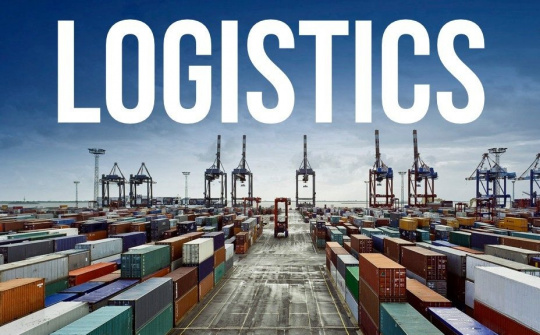
Huge potential for Vietnamese logistics industry
Sharing his opinion at a recent logistics event, Dr. Pham Hoai Chung, deputy director of the Transport Development Strategy Institute, said that the global logistics market scale reached about US$7.98 trillion in 2022 and is projected to hit US$18.23 trillion by 2030 with an average annual growth rate of roughly 10.7%.
With a logistics scale of about US$40 billion to US$42 billion, Vietnamese logistics is also considered to be one of the fastest growing sectors.
One factor is the great openness of the national economy through participating in 17 Free Trade Agreements (FTAs), including many new generation FTAs such as the EU-Vietnam Free Trade Agreement (EVFTA) which helps to bolster the export of goods, thereby opening up great opportunities for the logistics industry to further grow in the time to come.
The nation also ranks 43rd in the Logistics Performance Index (LPI) among the top five groups of countries in ASEAN, behind Singapore, Malaysia, and Thailand, whilst being in the same position as the Philippines.
According to Agility's assessment, 2022 saw the country placed at 11th in the group of 50 global emerging logistics markets. Regarding international logistics criteria and opportunities, the nation is ranked fourth and is considered the leading country with potential for logistics development in Southeast Asia.
Furthermore, Vietnam is also considered to have a transportation infrastructure associated with logistics with a system of roads, railways, inland waterways, seaways, and airways.
In particular, the sea route made up of 34 seaports has a total of over 100 km of wharves, with the seaport system being invested and built up along the North - South corridor. In line with this, the Vietnamese shipping fleet includes 1015 ships with a total tonnage of 10.7 million tonnes, ranking third in ASEAN and 27th in the world.
In particular, 839 coastal transport vehicles (VR-SB) have handled 100% of sea transport goods and will continue to further grow in the future.
Regarding human resources for the logistics industry, Dr. Chung said that in recent years the Vietnamese logistics industry has invested more heavily in training and developing staff. Other efforts include creating a high-quality workforce that has skills and experience in the field of logistics which in turn has helped to increase professionalism and improve the service quality of the industry.
With this analysis, Dr. Chung stated that the country boasts outstanding advantages compared to the rest of the region as it seeks to become a logistics centre to serve transshipment of goods to the region and the world, including the field of transportation and transit.
Favourable mechanisms needed to turn potential into reality
Although there great potential exists, according to Dr. Chung, the Vietnamese logistics sector still reveals limitations as the connection between modes of transport remains incomplete, whilst there remains infrastructure bottlenecks that need to be removed.
Road transport is still the main and dominant mode in a context where the full potential and advantages of railway transport and inland waterways has not yet been fully exploited.
Moreover, Vietnamese logistics enterprises remain limited with their small capital scale, while their operating areas is mainly domestically, with low service quality, little added value, and a general lack of connection.
In addition, the complicated nature of the world economic and contemporary political situation is creating new unpredictable problems that can negatively impact the global supply chain, including Vietnamese logistics.
As a means of overcoming the challenges posed to the logistics industry, Dr. Chung underlined the need for the nation to invest heavily in transportation and warehouse infrastructure to enhance the ability to manage and store goods.
In particular, it can be considered necessary to focus on large urban areas and industrial zones as a way of meeting customer needs.
Businesses need to actively engage in a broad array of activities to innovate administrative procedures related to logistics to reduce time and costs for logistics activities.
It is therefore essential to improve service quality to compete in the market, including training professional staff, using modern technology to manage goods and enhance transportation processes.
Along with that, local enterprises must proactively seek and take advantage involving new market opportunities to expand the scale of operations and increase revenue, Dr. Chung added.





